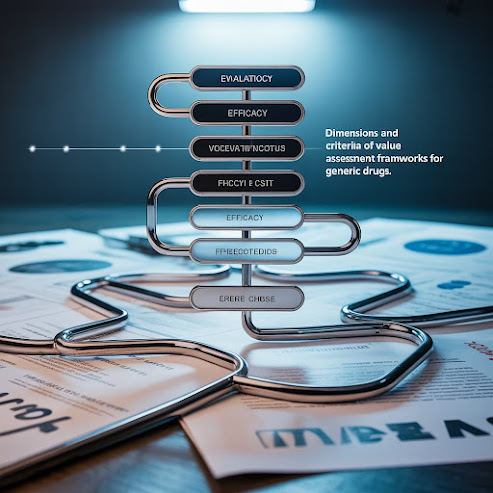Bridging Gaps with Computer Vision #sciencefather #phenomenological #astronomy
Bridging Gaps with Computer Vision: AI in (Bio)Medical Imaging and Astronomy 🧠🔬🌌
In today’s data-driven world, Artificial Intelligence (AI)—especially computer vision (CV)—is transforming the way researchers interpret the universe, both inside the human body and far beyond it 🌍✨. Whether it's mapping the intricate neural networks of the brain or scanning deep space for distant galaxies, AI-powered computer vision is bridging critical gaps in biomedical imaging and astronomy. Let’s explore how these seemingly distant domains are connected through the intelligent lens of CV. 👁️🤖
1. The Power of Computer Vision 💡📸
Computer vision refers to machines' ability to “see” and understand images or videos, extracting valuable information for analysis and decision-making. By mimicking the human visual system but with superhuman speed and precision, it allows for automated detection, classification, segmentation, and prediction in both microscopic and telescopic imagery.
2. Biomedical Imaging Revolutionized 🏥🧬
In biomedicine, early and accurate diagnosis is often the key to survival. Computer vision models trained on massive datasets can outperform even the most experienced radiologists in:
🔹 Tumor Detection: AI-powered CV tools can identify tumors in MRI, CT, or X-ray scans with high accuracy, aiding early cancer detection.
🔹 Ophthalmology: Deep learning models are being used to screen for diabetic retinopathy and glaucoma by analyzing retinal images with unmatched consistency 👁️💉.
🔹 Histopathology: CV can analyze tissue samples at cellular levels, identifying abnormalities that may be invisible to the naked eye 🧫🔍.
🔹 Cardiology: CV tools help in detecting arterial blockages, abnormalities in ECGs, and heart wall motion, ensuring more precise cardiac assessments 💓📊.
By automating these complex tasks, researchers can focus on innovative treatments, reduce diagnostic errors, and increase accessibility in underserved areas 🌍🩺.
3. Astronomy Through the AI Lens 🌠🔭
While biomedical imaging looks inward, astronomy looks outward—yet both involve analyzing vast amounts of image data. Astronomers are harnessing AI and CV to decode terabytes of sky images captured by modern telescopes. Here’s how:
🔭 Galaxy Classification: AI can quickly categorize galaxies based on shape, color, and brightness, a task that would take humans years to complete 🌌🌀.
🌟 Exoplanet Discovery: Machine learning models spot subtle dimming patterns in stars’ light curves to discover new worlds orbiting them 🪐📈.
💥 Supernova Detection: CV identifies rare, short-lived cosmic events like supernovae in real-time, triggering immediate follow-up observations 🚀💫.
📡 Radio Astronomy: Deep neural networks interpret complex signals from radio telescopes to unveil phenomena like pulsars and gravitational waves.
In short, computer vision is supercharging discovery, enabling astronomers to sift through cosmic noise to find meaningful signals faster than ever before 🚀🧠.
4. Shared Challenges and Solutions 🔄⚙️
Despite working with very different types of imagery, both fields face common challenges:
🔸 Data Annotation: Creating high-quality labeled datasets for training is time-consuming and expensive in both domains. Researchers now use semi-supervised and self-supervised learning to overcome this ⏳💾.
🔸 Interpretability: In critical fields like medicine and astronomy, explainability of AI decisions is crucial. Techniques like Grad-CAM, SHAP, and saliency maps are helping build trust in AI-generated insights 📊📌.
🔸 Data Imbalance: Rare cases (like unusual diseases or cosmic anomalies) are underrepresented. Synthetic data generation and augmentation are widely used to balance training datasets ⚖️🧪.
5. The Future: Cross-Pollination of Ideas 🔁🔬🌌
Excitingly, methods developed in one domain often benefit the other:
🧠 Techniques used to segment brain scans are now applied to segment craters or nebulae on other planets.
🔭 Star tracking methods are being repurposed for tracking cell movement or blood flow.
🔗 Multi-modal imaging—combining different imaging techniques—is gaining traction in both astronomy and biomedical research.
Such interdisciplinary collaborations are paving the way for smarter, faster, and more inclusive AI solutions 🚀❤️.
Final Thoughts 🎯
Computer vision is no longer a futuristic tool—it’s a present-day ally in both saving lives and exploring the cosmos 🧬🌌. For researchers, embracing AI isn’t just about automation—it’s about unlocking new paradigms of discovery, insight, and impact. Whether you’re studying brain tumors or black holes, remember: the universe—inside and out—is only as visible as the tools we use to explore it. And with computer vision, that view just got a whole lot clearer 👓✨.
#ComputerVision #AIinHealthcare #AIinAstronomy #BiomedicalImaging #DeepLearning #NeuralNetworks #AIResearch #SmartHealthcare #SpaceScience #ImageProcessing #Exoplanets #TumorDetection #GalacticAI #DataScience #FutureOfAI
#Phenomenology#ResearchAwards#
Twitter: https://x.com/compose/post
Instagram: https://www.instagram.com/
Pinterest: https://in.pinterest.com/
Blogger: https://phenomenological21.




Comments
Post a Comment